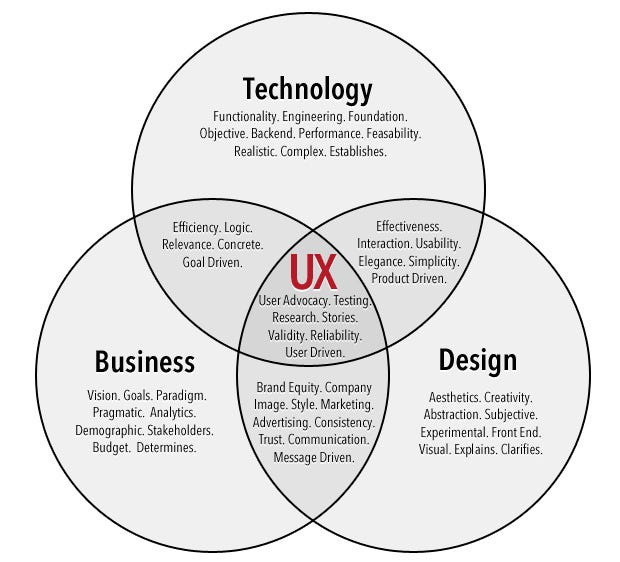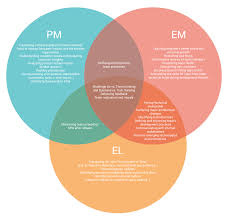I started a draft of this idea and then read a recent great and related post from Christina Wodtke, King of the Mountain, er, Middle, which added more detail to the role of a PM within a product trio. I’m going to borrow some of her visuals because they help illustrate many of the ideas I wanted to get across.
I’ve noticed that Venn diagrams of product “teams”, “trios”, “squads”, “balanced teams”, (you get the point) does not resonate the first time people look at it. It’s one of the most simple, ubiquitous diagrams in modern product development but it doesn’t really answer what most first timers want to know: but what do I do?

In my opinion the intent of this Venn is to illustrate that building empowered, cross-functional teams hinges on enabling each individual on a product team to understand how their work relates to that of their teammates. To achieve success (the middle part of the Venn), the effort of each individual should overlap to create something great. It’s not an exercise of defining silos.
If you are looking at the Venn and wondering where you fit and what you should be doing, what ends up happening is different versions get created to spell out who does what, what role fits where, and other things.

These new versions aren’t inaccurate per se but they create another problem: the Venn becomes just another checklist that reinforces siloed ownership and following process.
What typically happens is areas of ownership get defined based on discipline like product manager vs designer vs engineer.
My argument for getting to the Middle is to go in the opposite direction of granular: make sure your team champions viability, feasibility, and desirability regardless of who’s on it.
Viable: Someone on the team needs to champion building something viable. That is, a product worth it for your business to continue investing in. Typically, this aspect defaults to the product manager.
Desirable: Someone on the team needs to champion That is, a product your target audience will love using and want to continue using. Often, product designers are best equipped to champion this aspect.
Feasible: Someone needs to make sure your team is thinking about feasible product. As in, something that is high quality and can be easily maintained over time. This typically falls to engineers because they are the most specialized.
To achieve The Middle, it’s not enough to be great at what you do. It takes the overlap of every thing a team does to realize its potential: a product that the business continues to invest in and users continue to love because its product team stewards software that actually solves problems and can adapt to changing market needs.
The magic happens in the overlap, that’s the part to emphasize.






